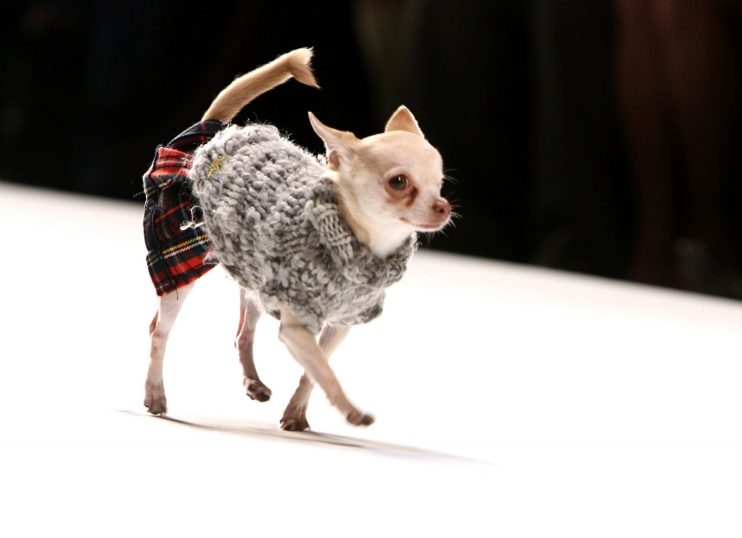Gentlemen do wear plaid: How to sport the tartan

I spent the bank holiday weekend in Glasgow. I hadn’t visited the former second city of the Empire for a couple of years, but from its suburbs spring my roots and I always feel a degree of comfort—admixed with wonder and bewilderment, it is true—when I step into the throngs on Buchanan Street or Argyle Street.
Although I was born and schooled south of the border, my family is wholly Scots, and I first put on a kilt as formal wear when I started at St Andrews, a lifetime ago. Even in a small Fife burgh, there was no shortage of suppliers: in 1996, there were (I think) three dedicated purveyors of “Highland wear” in St Andrews, all ready to relieve you of several hundreds of pounds for what was, admittedly, several hundredweight of wool. Later I bought a pair of trews: marginally less attention-seeking but warmer in the cold Scottish winds.
But I come to the subject partly because of my recent trip and partly because, ready for a renewed social life, I have recently acquired a new pair of trews in a more eye-catching tartan (the full-fat version of my mother’s family pattern). I intend to get my money’s worth out of them—they have already seen a wedding as the bottom half of morning dress—and they will be part of my black tie ensemble next weekend.
There is a tiresome sort of Scot who will regale you with all sorts of rules and customs about the wearing of tartan: who is entitled to what, whether kilts should be worn below the Highland Line, how trews should be cut. Most of these are nonsense, recently invented flummery which belong in the hateful basket of etiquette, not in the inclusive area of style and manners.
The truth is that most ‘modern’ Scottish formal dress was invented at the beginning of the 19th century under the aegis of Sir Walter Scott, centred on George IV’s great visit to Scotland in 1822. It was the first time a reigning British monarch had visited the northern kingdom since Charles II in 1651 for his defiant coronation at Scone Abbey. And the royal household went big: the king disported himself in acres of Royal Stewart tartan, and was painted in all his Caledonian glory by David Wilkie (who discreetly omitted the salmon-pink tights he had worn under his kilt to keep his solid Hanoverian legs warm). It is fair to say that George’s pose caught on.
If you are Scottish, or have a Scottish surname, there are helpful lists which will direct you to the appropriate sett or pattern. Indeed, there is a government-administered registry based in Edinburgh which records existing tartans and authorises new ones. (The Royal Bank of Scotland has its own design, as did the Stewart Grand Prix Formula 1 team.) Most of you will be content with what you find: essentially the choices are green-based and red-based, though some of the ‘dress’ tartans are spectacular (dress MacDonald features white-on-blue). If you are determinedly individualistic, and can be bothered, you can design your own and have it given the stamp of approval.
Once you have selected a pattern, choose between a kilt or trews (or get both!). A kilt is the epitome of the Hielan’ man, and it can be a magnificent garment. I heartily advise procuring one, but here are some points of which you should be aware. Firstly, they are not cheap. They are made to order and require a lot of wool. Secondly, they are heavy (see “a lot of wool”) and you need to be strapped securely in. Thirdly, whether you embrace the tradition of “nothing worn underneath” or not, you will notice the ambient temperature. They should end around the kneecap, and, although paired with long socks, they do leave you somewhat exposed to the elements.
Lastly, remember your dignity. Ever noticed some of the elaborate motions to which ladies go when sitting down, or standing up, or getting out of cars? You will need to do the same if you are not prepared the show your friends and acquaintances the last turkey in the shop.
(I might also add that, while you will sport a sporran in which a few belongings can be contained, you will lack pockets, so plan your personal storage, and find a casual stance which doesn’t require putting your hands in the pockets you now suddenly lack.)
Trews are less daring but can be as dramatic. Cut properly, they will be relatively slim-legged and high-waisted, with a fishtail back for the essential braces. This will eliminate the danger of ugly gapping between trousers and waistcoat and the protrusion of your shirt tails. Trews are also more practical; you still have pockets, you do not need special socks (or garter flashes or a sporran or a sgian dubh) and you can wear the upper half of your usual formal wear if you are so minded.
At another date I will set out some of the finer details of Charlie jackets, jabots, fly plaids and the whole shebang. For now, my advice is this: if ‘Highland Cathedral’ makes you weepy, or you enjoy cullen skink, embrace it, and get yourself some tartan. The investment will repay itself, and you should, with a bit of care, appear dauntingly daring. Sometimes being Scottish can be good for you.